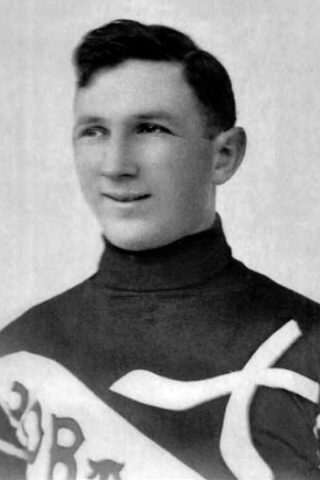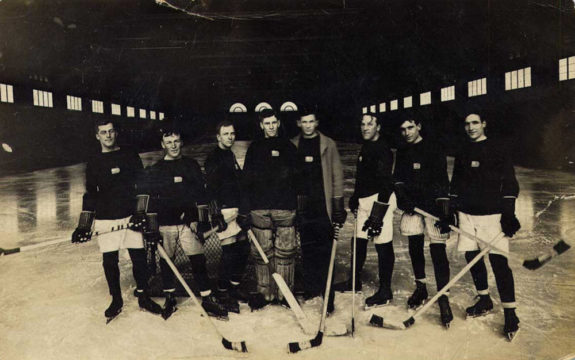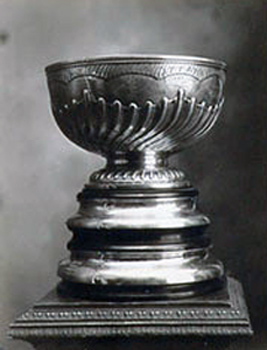The Chicago Blackhawks are one of the National Hockey League’s established and legendary franchises. With six Stanley Cup championships and numerous Hall of Famers including Stan Mikita, Bobby Hull, and Tony Esposito, the pedigree of the Blackhawks has entrenched them in hockey history since their founding in 1926. Although considered one of the founding franchises of the NHL, their history actually goes back much further, to an era when the Stanley Cup was contested amongst multiple leagues.
Rosy Origins
While many may think the Chicago Blackhawks were newly-founded when they entered the league in 1926, the franchise actually traces its origins back to the Pacific Coast Hockey Association’s (PCHA) Portland Rosebuds. Established as the New Westminster Royals in 1911, the team initially played its home games in Vancouver, British Columbia and was among the inaugural members of the PCHA alongside the Vancouver Millionaires. The Royals quickly became the best team in the league, winning the first championship with a record of 9-6.

The Royals relocated to Portland after the 1913 season due to consistently low attendance. The first American professional club, the team arrived in Oregon’s capital to a newly constructed 3,500 seat arena, the Ice Hippodrome, billed as the largest arena of its type. The franchise took its name from the official flower of the city of Portland and after its most famous event, the Rose Festival. In their first season in Portland, the Rosebuds finished in second place with a record of 9-9, but failed to qualify for the playoffs, as only the league champion advanced to the Stanley Cup.
The Stem of the Team
Upon arrival in Portland, the Rosebuds already possessed a formidable roster. The team’s defined stars were Tommy Dunderdale, the team’s leading scorer, and Ernie “Moose” Johnson, a defenseman with four Stanley Cups to his credit. Dunderdale was a point per-game player when he joined the Rosebuds, and in 1916-17 scored 22 goals and set a league record with 181 penalty minutes.
Johnson was considered one of the best in the game at his position, finishing in the top-10 in scoring in 1907, 1908, and 1910. Johnson was also rumoured to have used the longest hockey stick in league history, one which reportedly gave him a 99-inch reach.
The Flowery Final
The season after the team arrived in the Pacific Northwest, 1915-16, was one for the ages. The Rosebuds ran away with the league title, finishing miles ahead of their opponents with a record of 13-5. Capturing the PCHA title meant they would face off against the National Hockey Association’s (NHA) Montréal Canadiens for the Stanley Cup. The 1916 Stanley Cup Final were the first played under a set of rules which dictated the home team’s league rules were to be enforced; necessary because the Canadiens and Rosebuds came from different leagues with different rules.

Arriving in Montréal by train for the Stanley Cup Final, the Rosebuds secured a 2-0 win against the Canadiens in Game 1 as goaltender Tom Murray pitched a shutout against a Montréal team absent its biggest stars, Édouard “Newsy” Lalonde and Jack Laviolette. The Canadiens stormed back in Game 2 with a 6-3 win in a match that saw a series of fights, including a line brawl which ultimately spread to the stands. It was said that 500 fans fought each other amidst the chaos, and the police threatened to arrest several players.

Game 3 was decidedly calmer, as officials were wary of the events of Game 2 and the Rosebuds themselves were determined to avoid surrendering another lopsided number of goals. Portland jumped ahead to lead 3-0, but the Habs roared back to tie the game, before Portland squeaked out a 6-5 victory to set up a deciding Game 5. The Rosebuds lost the deciding game after Newsy Lalonde scored the game-winner on a tremendous individual effort.
The Base Ring
Despite losing the Stanley Cup, the Portland Rosebuds were nevertheless allowed (as PCHA champions) to engrave the team’s name on the Stanley Cup. Many in the organization believed that Portland was actually the holder of Lord Stanley’s mug despite losing it to Montréal, as many rejected the idea of an East/West finals series (from “How 100 Years Ago the Portland Rosebuds Became the First American Team Engraved on the Stanley Cup” Jay Horton, Willamette Week, 30th March 2016).
The Rosebuds’ engraving sits on one of the non-removable base rings of the Cup, immortalizing the Rosebuds’ journey to the Final forever.
A mere 10 years later, the Rosebuds were no more, as an ownership group based in Chicago purchased the rights to each Rosebuds player and used the existing roster to form the Chicago Blackhawks in 1926.
Although they essentially vanished as quickly as they arrived, the history of the Portland Rosebuds (and by extension, the Chicago Blackhawks) is deeply significant to hockey in America as the true origin for the professional game in the United States.